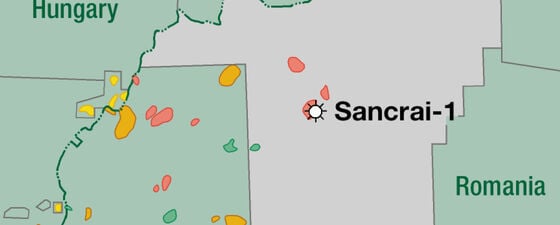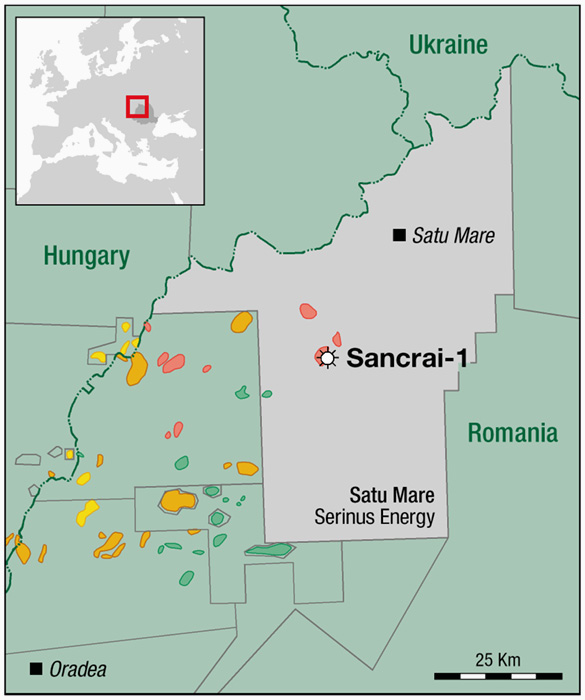Serinus Energy, the small exploration firm with producing assets in Romania and Tunisia, listed on AIM and Warsaw, have reported a gas discovery at Sancrai-1 on the EIV-5 Satu Mare Block in Romania. Sancrai is a structural trap with strong seismic amplitude support, to the south of their producing field Moftinu. Gas shows were recorded over 20m of gross pay over four sand intervals from 855m to 875m. The latest development is that testing at Sancrai-1 was unsuccessful in August 2021, and further studies are underway to evaluate the options available, given the high total gas readings during drilling. Serinus has been exploring the Satu Mare Block since 2017.
The play is a shallow biogenic gas play charging Miocene Pannonian drift sands with strong amplitudes. Further north at Moftinu the firm drilled 4 production wells with tests of up to 6.3 MMcfgd (Moftinu 1003), and Sancrai 1 was the second well in the current work programme commitment. Serinus have plans to test three other exploration ‘clusters’ at Berveni, Nusfulau (an oil play) and Babesti. SandHill operate the block to the west, EX-1 Voizozi, where they are planning a 3D as restrictions are eased. Satu Mare, at the northeastern end of the Carei Basin trend, has a long history of gas exploration and production in this north-eastern part of the Pannonian Basin. Several wells in this western margin of Romania were committed in recent bid rounds, but few companies have been able to mobilize full campaigns. The most recent well, further south in the Pannonian of Romania was the dry Iecea Mica well in the Ex-10 Parta block by ADX and Reabold Resources in late 2019.






